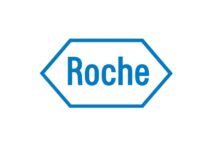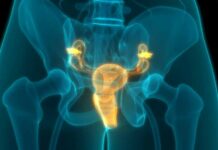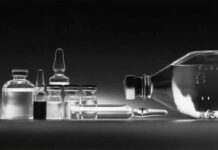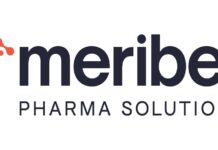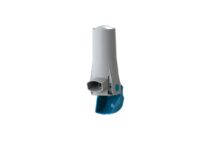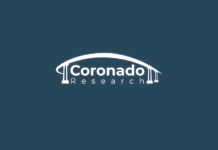Nitrosamines are unintended but potentially harmful impurities that can emerge during the manufacturing of pharmaceuticals. Recognized for their carcinogenic potential, the detection and control of these impurities are critical for ensuring drug safety. Recent advancements in analytical technologies have greatly enhanced the pharmaceutical industry’s ability to identify and mitigate the risks posed by nitrosamines, leading to significant improvements in both industry standards and patient safety.
Understanding Nitrosamines
Nitrosamines are chemical compounds that can form inadvertently during drug manufacturing, particularly through specific reactions involving nitrogen and amine-containing compounds under certain conditions. These impurities are of significant concern due to their potential carcinogenicity, having been linked to various types of cancer in extensive toxicological studies. The presence of nitrosamines, even in trace amounts, poses a serious health risk, necessitating stringent control measures in the pharmaceutical industry to protect consumer health and comply with global regulatory standards.
Improvements in Nitrosamine Control
Ensuring the safety of pharmaceutical products is a complex challenge, particularly when it involves mitigating risks associated with nitrosamine impurities. These efforts are essential for maintaining the integrity of drug manufacturing and safeguarding public health, highlighting the industry’s commitment to continuous improvement and adherence to stringent regulatory standards.
Enhanced Strategies and Processes for Nitrosamine Control
- Risk Evaluation and Mitigation Strategies (REMS):
- Developing comprehensive risk assessment protocols to pinpoint potential sources of nitrosamines, integrating these assessments early in the development phase and continuously throughout production.
- Manufacturing Process Adjustments:
- Implementing changes in chemical synthesis, such as modifying reaction conditions (e.g., temperature, pH) and substituting reagents or solvents known to minimize nitrosamine risk. Adoption of closed systems to reduce contamination risks.
- Raw Material Screening:
- Rigorous testing of raw materials to detect and exclude those that could potentially introduce nitrosamines into the production chain.
- Enhanced Analytical Monitoring:
- Utilizing cutting-edge analytical technologies not just for final product testing but throughout the production process to detect traces of nitrosamines at critical control points.
- Training and Awareness:
- Regular training programs for manufacturing personnel to increase awareness about the formation and prevention of nitrosamines, ensuring adherence to best practices in production.
Impact on Industry Standards
The evolution of nitrosamine detection and control technologies has profoundly influenced regulatory standards in the pharmaceutical industry. This section outlines the key areas of impact:
- Regulatory Updates: Enhanced detection capabilities have led to stricter regulatory guidelines on allowable nitrosamine levels, necessitating updates to existing standards.
- Mandatory Testing Protocols: Regulatory agencies now require more rigorous testing for nitrosamines as part of the drug approval process.
- International Standardization: There has been a concerted effort to unify nitrosamine detection standards across global markets. This ensures a consistent approach to drug safety and simplifies compliance for international pharmaceutical manufacturers.
These developments highlight a commitment to improving drug safety worldwide and reflect the dynamic nature of pharmaceutical regulations in response to technological progress.
Patient Safety and Market Implications
Enhanced detection methods contribute directly to patient safety by reducing the risk of exposure to carcinogens, allowing for immediate action if unsafe levels are detected. Additionally, these advancements can affect the pharmaceutical market by influencing drug approval processes and boosting consumer confidence in drug safety, potentially impacting market dynamics and the competitive landscape in the pharmaceutical industry.
Enhancing Patient Safety
- Reduction in Exposure to Carcinogens: Advances in nitrosamine detection have led to significantly lower levels of these carcinogens in pharmaceutical products, directly enhancing patient safety.
- Early Detection and Response: Improved technologies enable earlier detection of nitrosamines, allowing pharmaceutical companies to address potential safety issues before products reach the market.
Impacts on the Pharmaceutical Market
- Regulatory Compliance and Drug Approvals: Stricter standards and better detection methods result in more rigorous scrutiny during the drug approval process, influencing market dynamics.
- Market Confidence: Enhanced safety measures and compliance increase consumer and healthcare provider confidence in pharmaceutical products, potentially boosting market share for companies that prioritize advanced impurity detection.
Examples
- Case Study of a Leading Drug: A recent scenario involved a popular medication recalled due to nitrosamine contamination. Quick adaptation to new detection methods helped the manufacturer swiftly identify and rectify the issue, minimizing health risks and restoring consumer trust.
- Impact on New Drug Launches: Enhanced detection capabilities have enabled faster, more confident market introductions of new drugs, highlighting a competitive edge for companies equipped with advanced technologies.
To conclude
As the pharmaceutical industry continues to advance, the quest to enhance pharmaceutical safety, controlling nitrosamines remains a critical focus due to their serious implications for patient health and market dynamics. Recent advancements in detection and control technologies have set new standards, promoting safer drug development and building trust within the industry and among consumers. Within this evolving landscape, Veeprho emerges as a leader. With its extensive expertise and a vast array of over 450 nitrosamine impurity reference standards, Veeprho exemplifies commitment to excellence, driving forward the industry’s capabilities in ensuring drug purity and safety.



